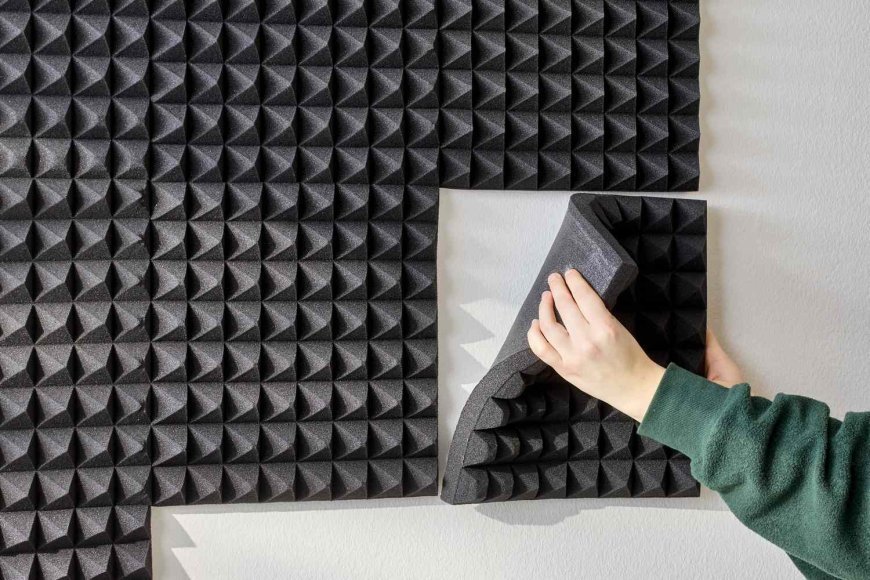Elevate Acoustic Comfort with Sound Insulation Foam in Automotive Interiors

Modern vehicles are filled with sounds—from the tires on the road to engine vibrations and wind passing over the roofline. While some of these noises are unavoidable, their impact can be dramatically reduced with the strategic use of sound insulation foam.
Why It Matters
Ambient noise inside a vehicle contributes more than we realize to our driving fatigue. Prolonged exposure to low-frequency sounds can drain your focus, while random clatter and resonance disrupt conversations and entertainment systems. Insulating foam works by absorbing and diffusing these sounds before they ever reach your ears.
Simple Yet Effective
Unlike bulky soundproofing mats, foam provides insulation without a heavy footprint. It's lightweight, easy to install, and adaptable to curved or uneven surfaces. This makes it ideal for use behind interior trim, underneath flooring, inside door panels, and along rooflines.
What makes sound insulation foam especially efficient is its ability to both absorb airborne noise and reduce structural vibration—two key sources of in-cabin sound disruption.
Application Versatility
From compact cars to full-sized SUVs, every vehicle can benefit from well-placed insulation. You don’t need to fill every inch of your car either. Often, targeting key noise entry points—like the doors, floorboards, trunk, and firewall—yields the most noticeable improvements.
Midway through a ride, it becomes evident: conversations are clearer, your favorite songs sound fuller, and long drives feel less draining. That’s the difference strategic sound insulation can make.
Choosing the Right Foam
There’s no one-size-fits-all, so choose a product that suits your needs:
-
Open-cell foam: Excels at absorbing ambient and high-frequency noise.
-
Closed-cell foam: Better suited for blocking low-frequency sounds and providing a vapor barrier.
-
Hybrid/composite solutions: Combine both types for broad-spectrum sound management.
Be sure to pick a material that offers resistance to moisture and temperature changes—key traits for durability in automotive environments.
Installation Made Easy
You don’t need to be a professional installer to apply sound insulation foam. With a few hand tools and a clean workspace, you can complete a project over a weekend. Most foam sheets come with adhesive backing, allowing for precise placement without mess or hassle.
Final Thoughts
Upgrading your vehicle with sound insulation foam is an underrated but powerful improvement. It doesn’t just mute noise—it enhances how you experience your car. Whether you're making phone calls, listening to music, or simply enjoying a peaceful ride, better acoustics are well within reach. It's a small investment that pays off every time you start the engine.
A Smart Approach to Quieter Interiors: Exploring the Benefits of Sound Reducing Foam
Whether you’re driving through city streets, cruising down the highway, or parked at a scenic overlook, the sounds around you can either enhance or hinder your experience. In today’s world, where comfort is king, controlling those sounds has become an important consideration for drivers and vehicle manufacturers alike. One material that’s quietly making a big impact? Sound reducing foam.
This versatile, often overlooked product plays a key role in shaping the acoustic quality of a space, especially in automotive settings.
Why Noise Control Matters More Than Ever
Noise fatigue isn’t just an annoyance—it can actually lead to stress, reduced concentration, and even hearing strain over long periods. In vehicles, constant road rumble, engine vibrations, wind turbulence, and even the clatter of loose objects can all interfere with a pleasant ride. That’s where effective interior treatment makes a difference.
Understanding the Material
Sound reducing foam typically comes in open-cell or closed-cell formats, depending on its primary function. Open-cell versions are great at absorbing airborne sound, while closed-cell types are better at blocking and redirecting vibration-based noise. The right combination can significantly lower in-cabin noise levels without adding much weight or complexity to your vehicle’s interior.
Integrated Comfort and Performance
For those who appreciate subtle luxuries, using these materials offers more than just noise control. They contribute to a better overall driving experience. Imagine clearer conversations, more immersive audio playback, and fewer distractions on the road. Even small strips placed behind door panels or beneath floor mats can help soften the harshness of everyday driving noise.
Applications Beyond the Obvious
Although often used in cars, this type of foam isn’t limited to automotive applications. It can also enhance the acoustics in RVs, boats, and even small aircraft. And for DIYers, it’s an accessible upgrade—easy to cut, shape, and install without the need for specialized tools.
Sound Reducing Foam in Everyday Use
You’ll find these foams tucked into dashboards, wrapped around speaker enclosures, lining trunk compartments, and more. Because they’re flexible and adaptable, they can be fitted into virtually any shape or surface area where vibration or noise is an issue. More importantly, they help block that noise before it becomes part of your cabin's ambient soundscape.
A Small Investment for a Big Return
While luxury vehicles often come pre-equipped with noise control features, budget and mid-range cars benefit immensely from the aftermarket addition of sound-reducing treatments. It’s one of the simplest and most affordable upgrades that yields a noticeable boost in comfort and perceived vehicle quality.
Practical Tips for Getting Started
Start small—focus on doors, wheel wells, and the floor area. These zones typically allow the most noise into the cabin. Choose a material that suits your noise control needs, whether that’s a lightweight open-cell foam or a denser closed-cell option. And don’t forget to clean surfaces thoroughly before installation to maximize adhesion.
What's Your Reaction?

























































